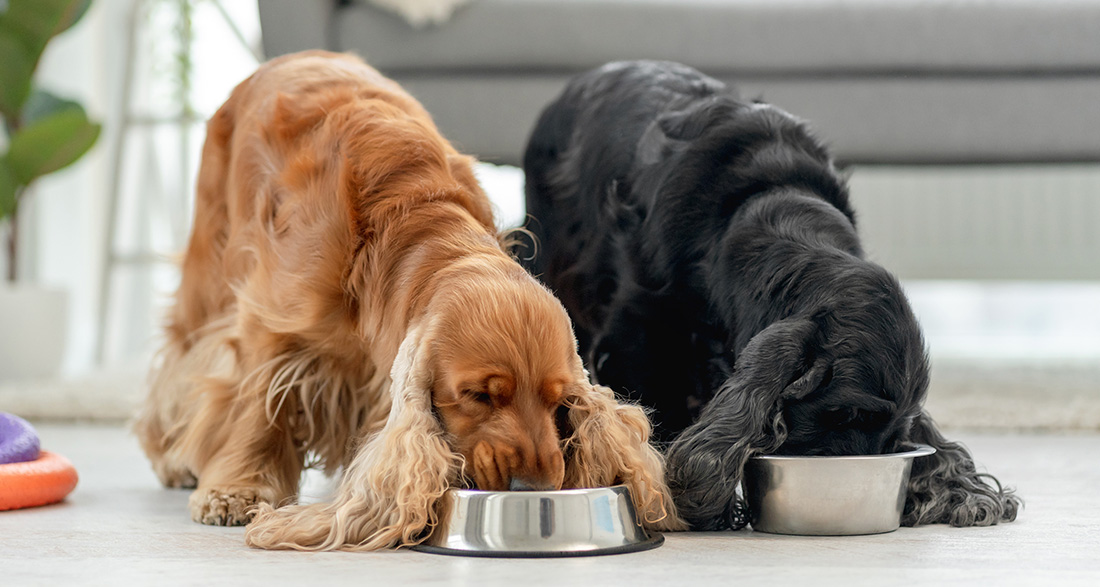Should you feed dry or wet food to your dog? Are there any alternatives? If you find yourself asking these questions, you’ve come to the right place.
There are many ways to nourish your four-legged friend, and dog owners often wonder which form of nutrition is the best or healthiest.
The topic of dog nutrition is often debated heatedly, yet most conversations rarely reach a conclusive result.
Apart from the traditional dry and wet food, there are now many different ways to feed your dog.
In addition to commercial pet foods, some dog owners are returning to the more traditional practice of preparing homemade meals or feeding leftovers. Furthermore, an increasing number of owners are exploring raw feeding and transitioning to this method.
Below, you’ll find an overview of the various feeding methods and the pros and cons of dry and wet food.
Important
If your dog experiences difficulties with its food and has complaints, it is crucial to consult a veterinarian. Complaints could be indicative of allergies, intolerances, or deficiencies that need prompt attention.
Dry Food for Dogs: Pros and Cons
Dry food is a commercially prepared feed that is favored by many dog owners for its ease of feeding. There are numerous brands and varieties available in the market.
Advantages of Dry Food:
- Easy to feed
- No significant time commitment
- Affordable options
- Accurate nutritional information
- Odorless
- Easy to store
Disadvantages of Dry Food:
- Industrially processed
- May contain high levels of grains
- Possibly contains preservatives
- Often contains chemically manufactured vitamins
- Low water content – dog needs sufficient water intake
- May promote food allergies
The various dry foods often differ significantly in quality. Many providers now avoid grains and preservatives, opting for high-quality ingredients, as these determine whether a feed is healthy or unhealthy.
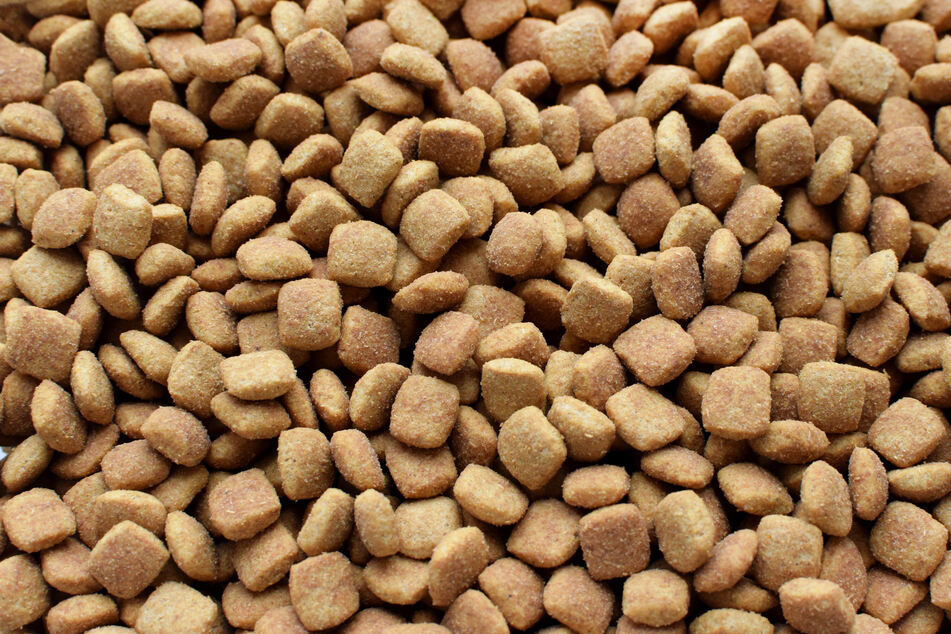
What is the best dry food for dogs?
This question should be answered individually by each dog owner.
It depends not only on the ingredients but also on the individual taste preferences of the furry friend. However, every owner can ensure that the food is preferably grain-free and free from preservatives.
How much dry food per day?
The amount of dry food to be fed per day depends on the food, the weight, and age of the dog.
For example, puppies require more energy and need a richer diet than older dogs. Most feed providers provide precise instructions on the packaging.
If this is not the case, dog owners can use the fat content of the food as a reference. For instance, one can compare the fat content of the new food with that of the old one. If both proportions are roughly the same, the same amount can be fed. Other indicators should, in any case, include the age or energy consumption and the weight of the furry friend.
Owners can also observe changes in the dog’s appearance. After a food change, it is essential to pay attention to any alterations and regularly weigh the dog.
Wet Food for Dogs: Pros and Cons
Many dog owners assume that wet food is worse for their pets than dry food. However, this is a misconception. It depends solely on the dog’s preferences and whether a feed meets the nutritional needs and provides sufficient nutrients.
Advantages of Wet Food:
- Minimal time commitment
- Affordable options
- Accurate nutritional information
- Sealed cans have a long shelf life
Disadvantages of Wet Food:
- Open food is perishable
- May contain high levels of grains
- Possibly contains preservatives
- Often contains chemically manufactured vitamins
- May promote food allergies
There are significant qualitative differences between various wet food brands as well. Therefore, wet food is not universally good or bad. Dog owners should, like with dry food, carefully research the ingredients and nutritional composition.
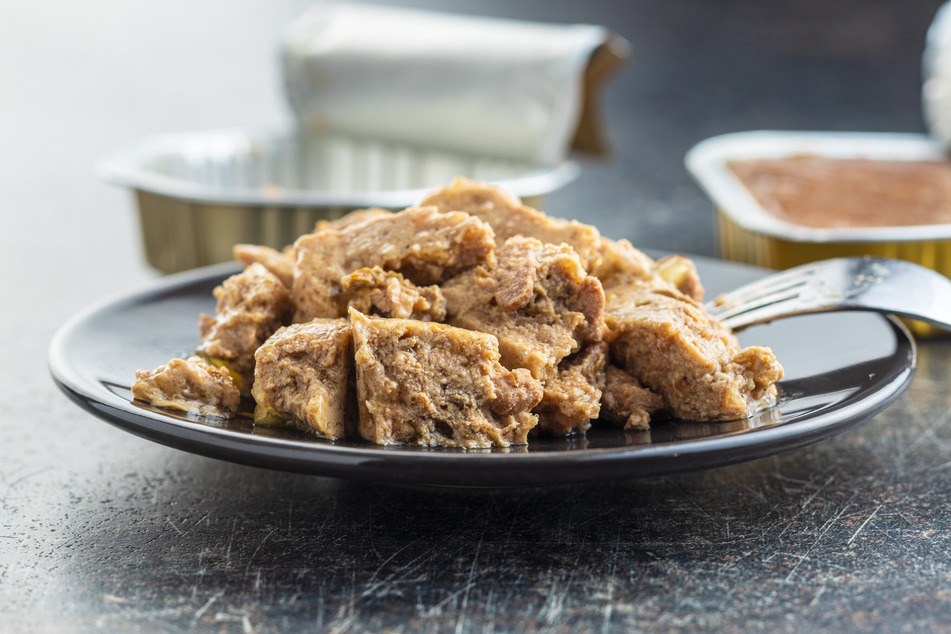
What is the best wet food for dogs?
The best wet food for a dog should meet its individual needs.
Just like with dry food, dog owners can ensure that wet food is preferably grain-free and free from preservatives.
How much wet food per day?
When it comes to wet food, the principles are similar to dry food. The composition of the food, the age, and weight of the dog are crucial factors.
The same rule applies here: the higher the fat content of the food, the smaller the portion size. In most cases, precise instructions regarding the optimal amount of food can be found on the back of the packaging.
To ensure that the quantity is optimal, one should pay attention to changes, especially after a food switch, and regularly weigh the dog.
Whether dry or wet: What makes a good commercial dog food?
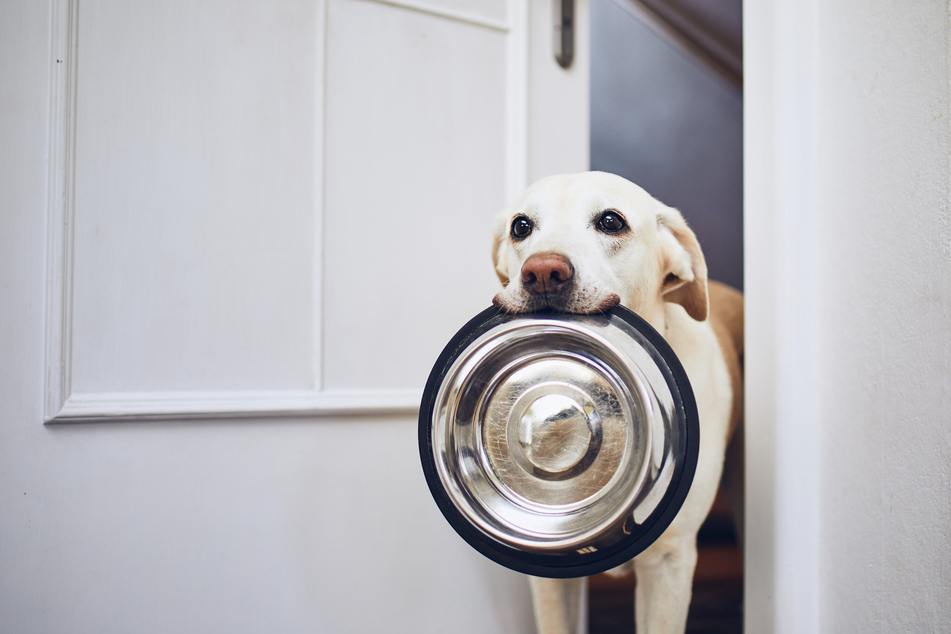
- Grain-free
- Without preservatives
- Accurate information about ingredients
- Sufficient nutrients
- Complete and balanced (adequate crude protein and crude fat)
- Adequate fiber content (crude fiber)
Alternatives to traditional commercial dog food
In addition to commercial pet food, there are two other alternatives that are becoming increasingly popular among dog owners.
Homemade Dog Food
The trend of homemade dog food is on the rise. However, some dog owners revert to feeding their four-legged friends only human leftovers. This practice should be avoided as spices and preparation methods may not be suitable for the sensitive digestion of dogs. Moreover, many human foods are toxic to dogs.
Advantages of homemade dog food:
- Known ingredients
- Fresh and high-quality ingredients
- Customizable
- Dogs often respond well to the food
Disadvantages of homemade dog food:
- Time-consuming
- Storage requires effort
- Knowledge is necessary
- No precise nutritional information – deficiencies may occur
Homemade food is certainly not a bad alternative. However, it requires a significant amount of knowledge to provide a nutritionally rich and complete diet. Owners should consult with a veterinarian before embarking on this option.
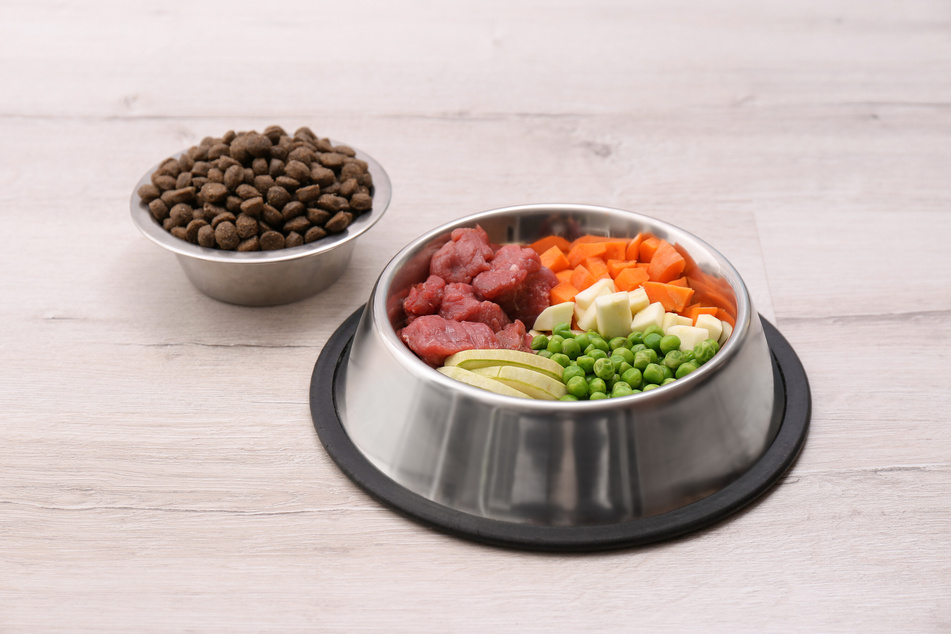
B.A.R.F. – Biologically Appropriate Raw Food
B.A.R.F., or raw feeding for dogs, aims to mimic the natural way of food consumption. It involves feeding mainly raw meat, vegetables, fruits, and grains, excluding commercial pet food entirely.
Advantages of B.A.R.F.:
- Known ingredients
- Fresh and high-quality ingredients
- Customizable
- Dogs often respond well to the food
- Prevents fast eating (no gulping)
Disadvantages of B.A.R.F.:
- Time-consuming
- Difficult to store
- Intense odor
- Knowledge is necessary
- No precise nutritional information – potential deficiencies
- Costly
Important
Raw feeding poses risks, requires in-depth knowledge, and should not be undertaken lightly. Owners are advised to seek guidance from a veterinarian, as with homemade food.
Conclusion: Dry or wet food – nutrients are crucial
There is no one-size-fits-all answer to whether dry or wet food is healthier.
As long as a food covers all necessary nutrients and is tailored to the dog’s individual health condition, dog owners should primarily consider how much time they can invest in preparing food for their furry friend and what suits their dog’s taste preferences best.
It’s also important to mention that there are significant quality differences between various types of food and brands. Therefore, dog owners should not categorize new food solely based on its processing method but primarily based on its ingredients and nutritional values.


